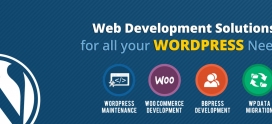
Five Steps To Building Your Dream Website
There once was a time when only the IT elite had their own websites. Now? Mittens the cat has a webpage with 70,000 unique viewers per month. This is not, however, without good reason.
Websites afford the opportunity to make your name, your product, and your words as accessible as humanly possible. Combined with the powerful Internet search indexes that fuel Google and Yahoo, potential customers are now just a quick search query away from discovering your quality wares. But the process is not as simple as choosing the right font and page background. A number of factors contribute to making your website the best it can possibly be.
1. Know Your Budget
Building a website begins, and ends, with the least fun step: budgeting. Web hosting, premium features, and additional bandwidth can come sometimes at a premium, so knowing what you are willing to spend to make your website great is the first step. Consider what you can reasonably spend on a website, what you need, and, just as importantly, what you do not need. Building a great website is not about the biggest and best, but what is most appropriate for your company.
As obvious as it may sound, it bares articulating that larger websites with more ambitious goals require a much greater budget. Facebook, for example, spends more than the annual revenue of most companies on server capacity to keep its service running at full speed. More modest sites, however, may only need a $10/month subscription fee for storage of product images and the necessary dues for server load from incoming viewers.
2. Make Your Wish List
One could argue that this is the first step in the process. When building your website, it’s important to determine what you want to include on your website, and how you want it to function. Are you a small business? Perhaps contact information and inquiry forms are enough. Selling a wide selection of products on your site? An organized tree of product pages, up-to-date pictures, and pricing information will be your priority.
Know your market and tailor your wish list to their needs. Your website should do no more, nor any less than what the customer needs to quickly and painlessly find the information they seek and complete the transaction with your business. Avoid popular traps like social media feeds and cluttered backgrounds. Features like this may seem cool in the lab, but deploying them in the real world for online visitors with short attention spans and a penchant for distraction can prove detrimental.
3. Design Your Website
This step may only occupy one slot on this list, but the process is important enough to merit three. Good web design is essential to a painless user experience and there exists copious information to guide you in your efforts. Hack Design, for example, possesses expert-curated articles about design on all sorts of topics that can help make the experience a little less daunting. Another method is to take note of attractive websites and mirror their good practices.
Based on your response to step 1, professional web design may be worth the money. The fact is that good design has demonstrable potential in improving your bottom line. Good design practices affect not only the shopping experience, but also the mood of visitors. Since the steep price premium of good design is not accessible to all businesses, consider your priorities and your budget and evaluate whether or not professional web design is a viable and useful option for you.
Do not step away from the web design canvas without considering how your website appears in search engine indexes. Search Engine Optimization (SEO) is a realm of study with volumes of research to its name but knowing a few basics can make a big difference. Focus on keywords that best describe your business and brand and consider gleaning further insight once the site goes live from services like Google Analytics.
4. Choose a Great Domain Name
As our knowledge of how the characteristics of web pages affect consumers changes, so too do our practices. It once was thought that a domain name was simply a sign; that “Bob’s Towing” would suffice. However, it is now understood that a web domain performs multiple tasks when viewed by online visitors, including setting expectations, improving accessibility, and building a brand.
It is important to keep in mind that most good domain names are, for better-or-worse, owned. As a result, domain name companies are making a mint from charging a premium for good domain names. Despite this, purchasing a well-crafted and impactful domain name is worth the money. Your domain is your storefront on search engines and, just like a physical storefront, a fresh coat of paint will pay for itself many times over.
5. Keep it Updated
Once the site of your dreams is set up, plan on performing routine maintenance to keep it “the site of your dreams”. Consider any time you’ve shopped at a site with outdated information, pricing, or item descriptions. Were you happy? What did this do for your trust in the organization? Did you complete your transaction and, if you did, did you come back to the cobweb riddled vendor?
Consumer trust is greatly influenced by the integrity of your new digital storefront. Run a regular spot-check and update/delete old information. Check pricing and keep it updated, removing old products that are no longer offered. Keep contact information current to avoid any lost emails or missed connections, and occasionally update your website. Brand image must be reflected by your website and no one wants to shop at an establishment where the storekeeper has left the shelves un-dusted.
Congratulations! You’ve officially built your dream website, minus the work to get there. Creating your digital hub is all about evaluating your needs and designing its functionality around those needs. Be prepared to invest both time and money in the project and when it’s finished, step back and bask in the satisfaction of a job well done.



